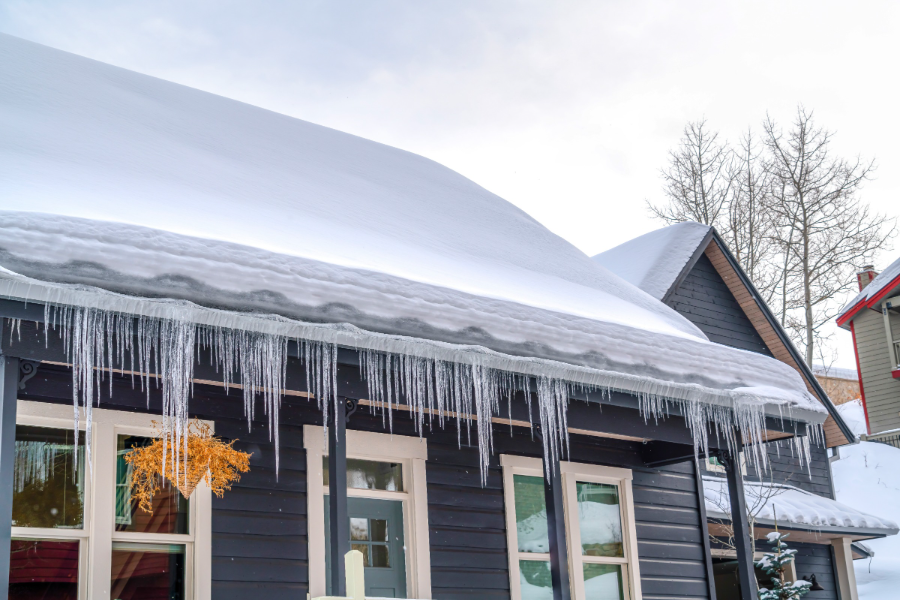Keep Your Roof Cozy During Winter Weather

One of the hidden dangers of winter weather is the damage it can do to your roof. Common in the northern regions of the country, ice dams occur when heavy snow buildup melts during the day and then refreezes when temperatures drop overnight. The dangers of ice dams can lead to major roof damage as well as minor problems like gutter damage and water leaks inside the home.
One of the most common negative results of an ice dam happens to your gutters. When ice dams build, they get heavier, and the weight of one after large winter storms can tear your gutter away from your roof, causing considerable damage to the outside of your home.
However, the more dangerous problem occurs during the melting-refreezing cycle. If left unnoticed for an extended period, the combination of water and ice can cause shingle damage, allowing water to get underneath the now-loose shingles and eventually inside the home. In these cases, significant damage can occur to ceilings, walls and attics.
Ways to Prevent Ice Dams
Clean Out Your Gutters:
Before winter weather hits, thoroughly remove all leaves and debris from both your gutters and downspouts. This will allow for a clear path for all melted snow and ice without any obstructions.
Remove Icicles & Snow from Gutters:
While you are shoveling, make sure to remove large icicles and snow build-ups from your gutters. Use this time to inspect your house for possible ice dams or origins of a problem.
Keep Snow on Your Roof to a Minimum:
If you are noticing a large amount of snow is forming on your roof, consider purchasing roof-rakes. Roof-rakes are long-handled tools that allow you to safely pull snow off your roof from the ground. Keeping large amounts of snow off your roof will help prevent the formation of ice dams.
Ways to Remove Ice Dams
Use a Safe Chemical: One of the most successful ways to remove an ice dam is to melt it with calcium chloride (the same product that you use on your sidewalk and driveway). The method suggested by professionals isn’t to just sprinkle it on the ice dam, but instead to fill multiple socks with the granules and position them over the ice dam. If you position the socks in a pattern over the ice dam and just off the edge of your roof, as it melts the ice, it will create a channel through the ice dam which will allow other water to safely run off the roof.
Break Into Chucks: This option is a little more dangerous, and may be left to the professionals, but using tools to break the ice dam into smaller pieces, in conjunction with the calcium chloride is also successful. Make sure the snow has been removed before allowing anyone on the roof, and never use heavy metal tools to chop at the ice because it may do damage to the roof or the exterior of the home.
Does homeowners insurance cover ice dams? Dwelling coverage may cover the cost to repair any ice dam damage. To make sure you have the right homeowners or renter’s insurance coverage, contact your AAA Insurance Agent at 1-800-222-1469, visit AAA.com/HomeInsurance, or stop by your local AAA office.

